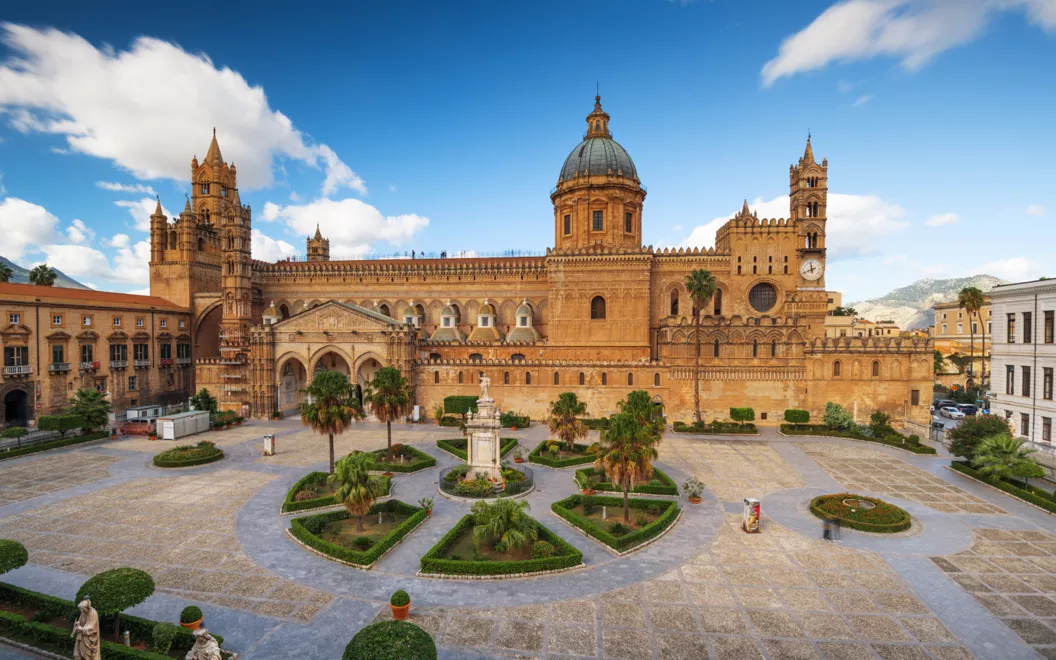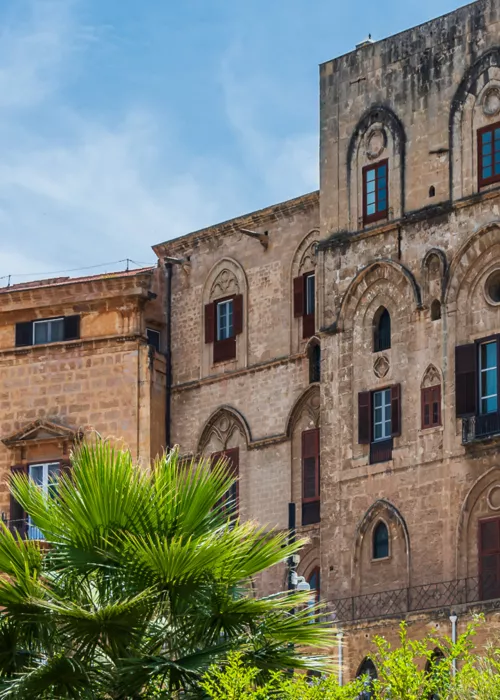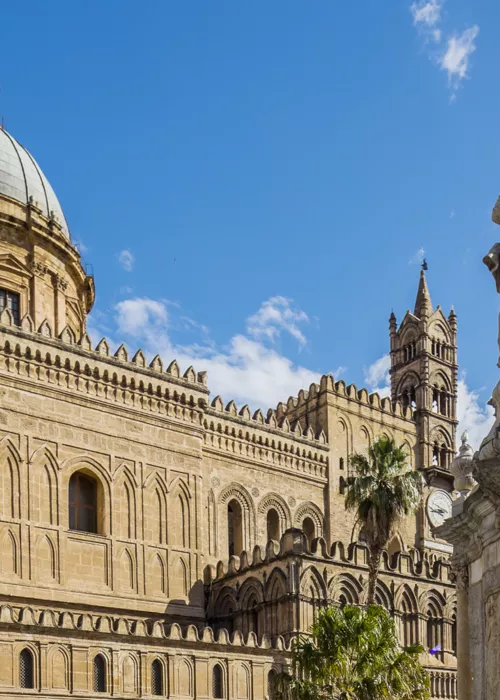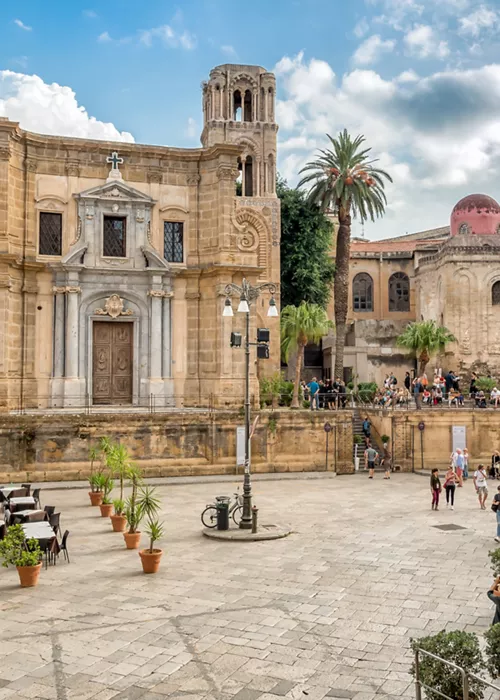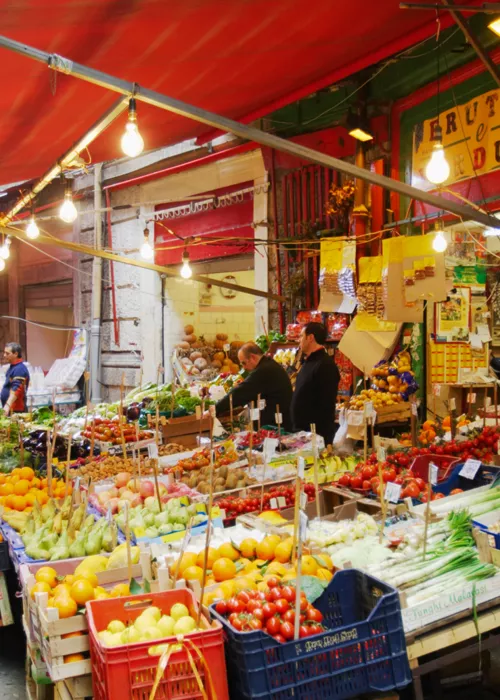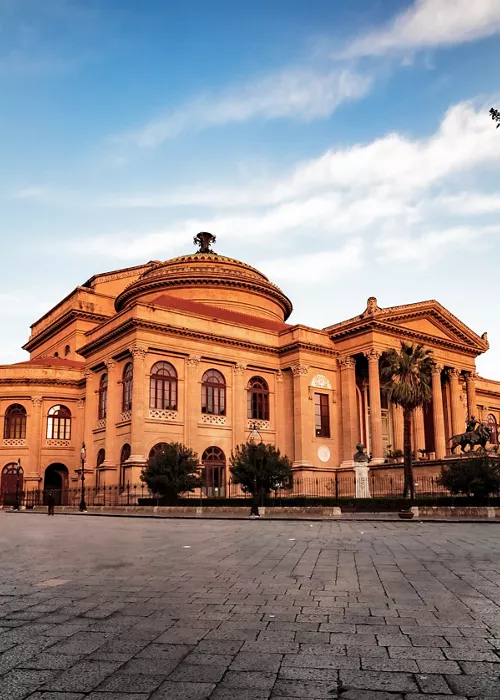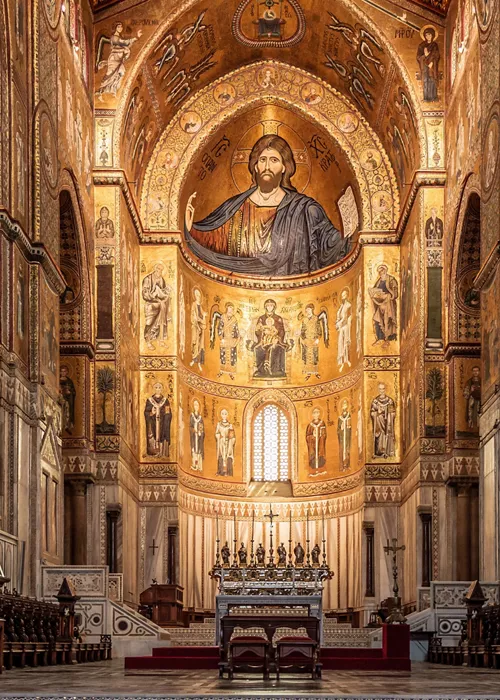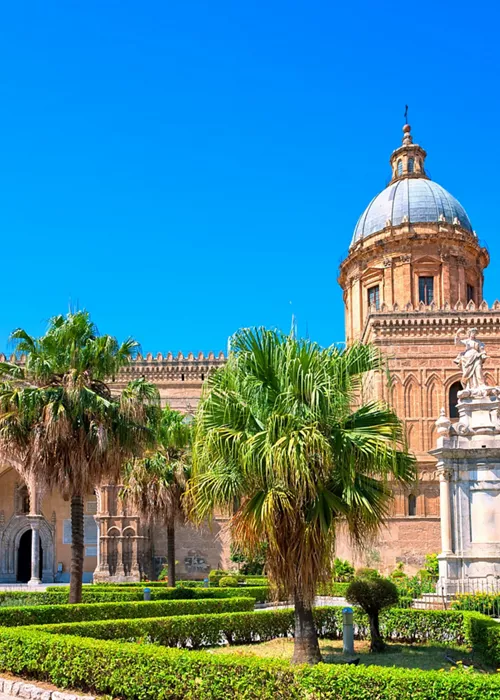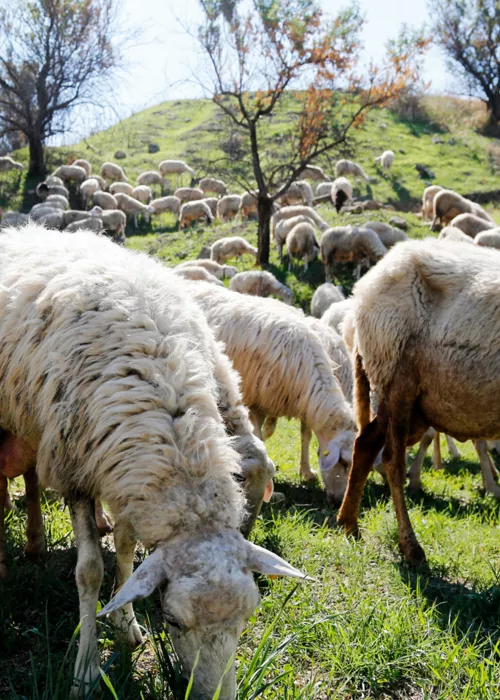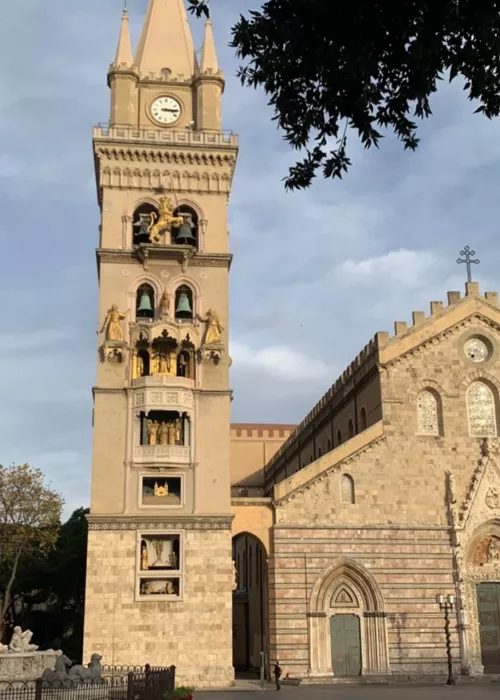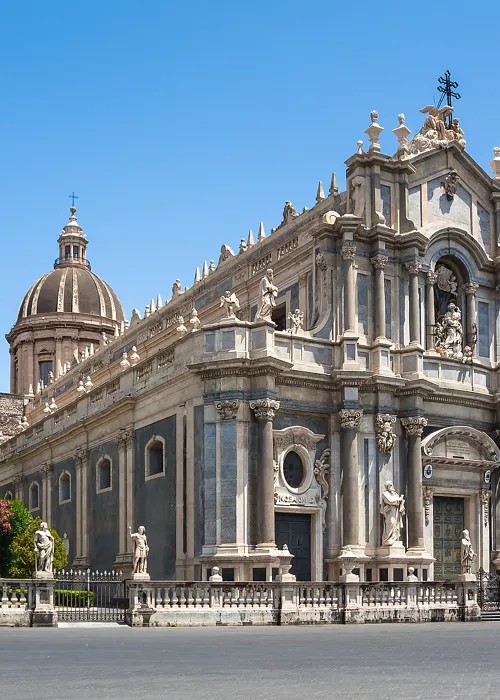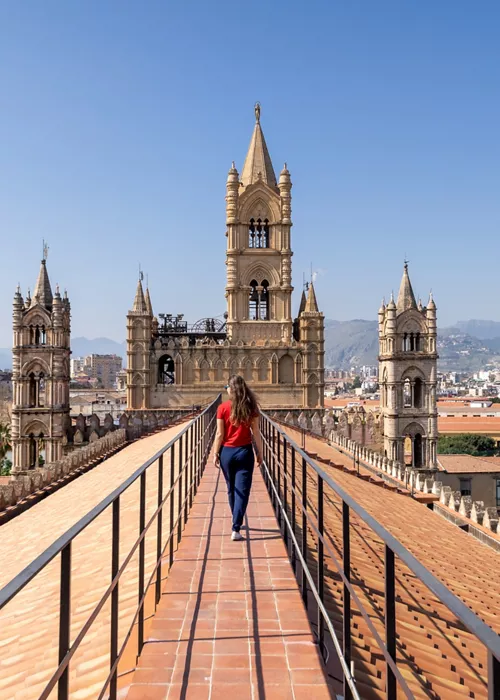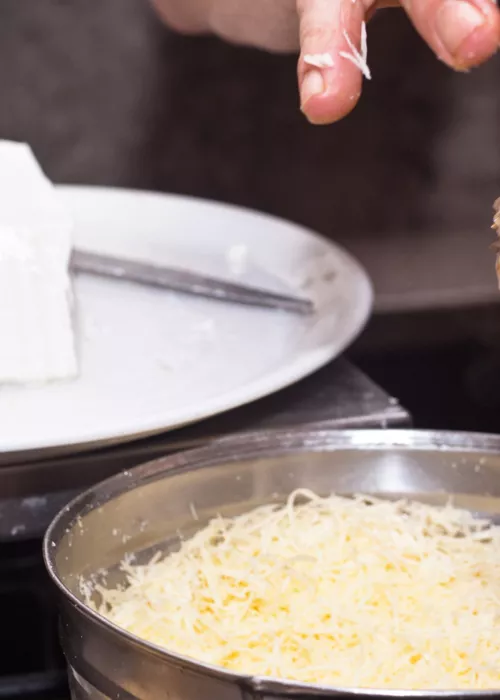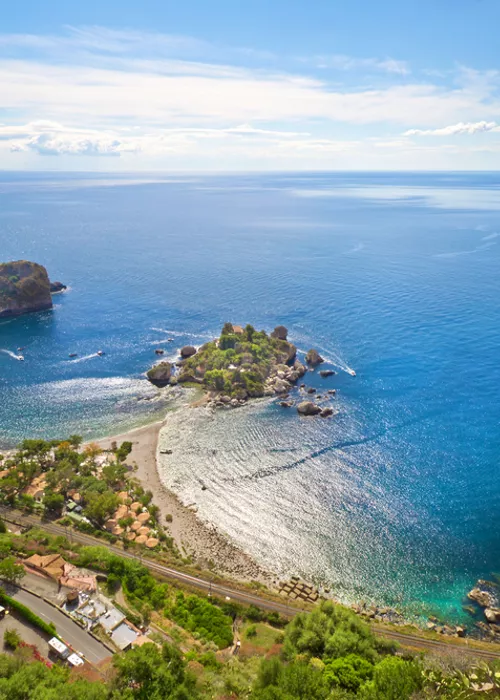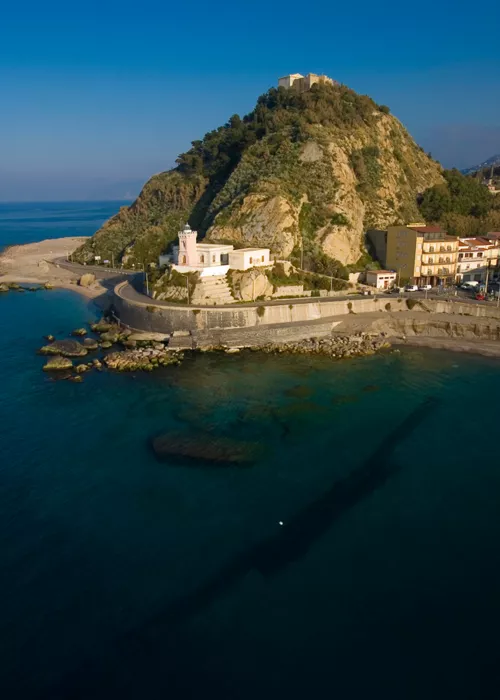2 days in Palermo: the itinerary
7 minutes
Overlooking the Mediterranean, during its long history the city experienced a long list of conquerors and noble dynasties, but it never lost its identity.
Palermo - the capital of the ancient Kingdom of Sicily - charms everyone thanks to its cultural and architectural melting pot, well visible in each of the four "mandamenti" (districts) in which it is divided. Palaces and churches blend with the urban area creating a unique fabric, where the presence of the iconic city markets sets color and vitality in contrast with the austerity of the many noble palaces and monuments (many part of the UNESCO World Heritage Sites). 48 hours therefore for a journey through thousands of years: we did it!
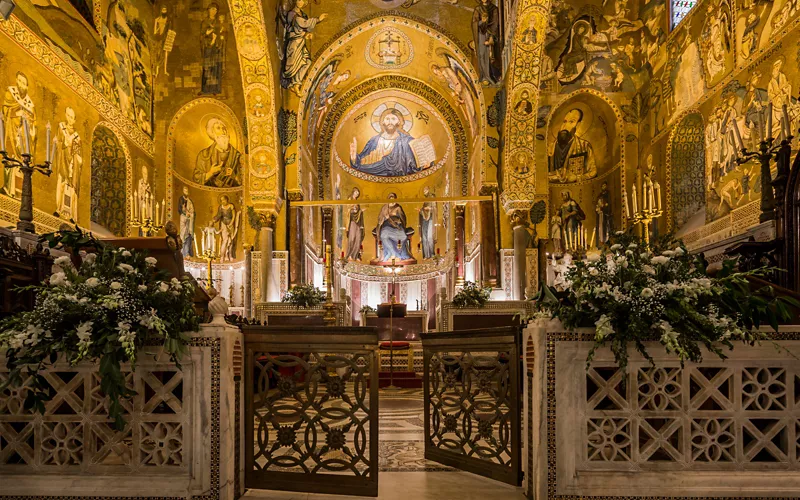
A meeting in the morning in front of the Palazzo dei Normanni, now the home of the Regional Assembly. The palace, a UNESCO heritage site, is the oldest royal residence in Europe, home of the rulers of the Kingdom of Sicily and imperial seat under Frederick II and Conrad IV. Many know it as the Palazzo Reale. On the first floor is the Palatine Chapel, a UNESCO World Heritage site as part of theArab-Norman Itinerary of Palermo, Cefalù and Monreale, in which the centuries-old interventions of Mediterranean religions and cultures can be seen; its architecture combines the Latin basilica layout with decoration typical of Islamic architecture, as cypress stalactites known as muqarnas, but its heart remains Byzantine: the hemispherical dome houses a breathtakingly large mosaic of the "Christ Pantocrator".
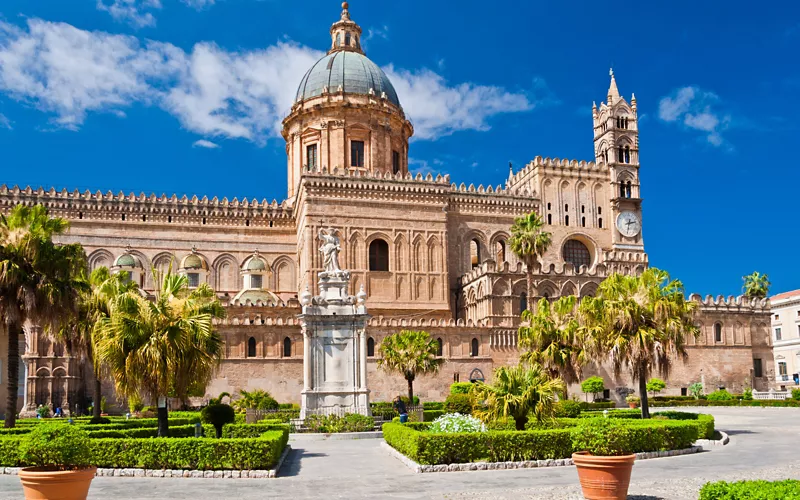
The 48 hours in Palermo continue towards an imposing building, in which domes, towers and battlements, gates and porticoes, majolica-tiled domes, bridged-arches and a bell tower blend together. This is the description of the Palermo Cathedral, a not to be missed stop in the historical city center overlooking Via Vittorio Emanuele.
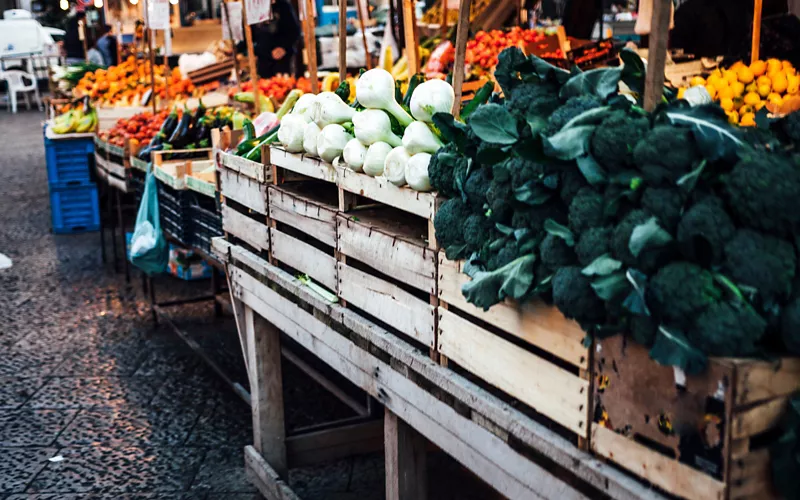
The Ballarò market can be considered an heir of the souk given that it already occupied these streets during the Arab domination and continues to evoke its atmosphere. Let yourself be conquered by the "abbanniate", the chants with which the merchants offer their goods, and rely on your sense of smell to discover the most authentic street food: the scent of frying is a sign of freshly cooked panelle (chickpea fritters sandwich) while a cloud of smoke accompanied by the scent of meat announces that the "stigghiole" (intestines) are being cooked (and each "stigghiularu" will be happy to tell you how he prepares his version). In these parts you can choose among the many street food and wine selections or venues that Palermo reserves to its citizens and guests. After lunch, the exploration continues in the Albergheria district.
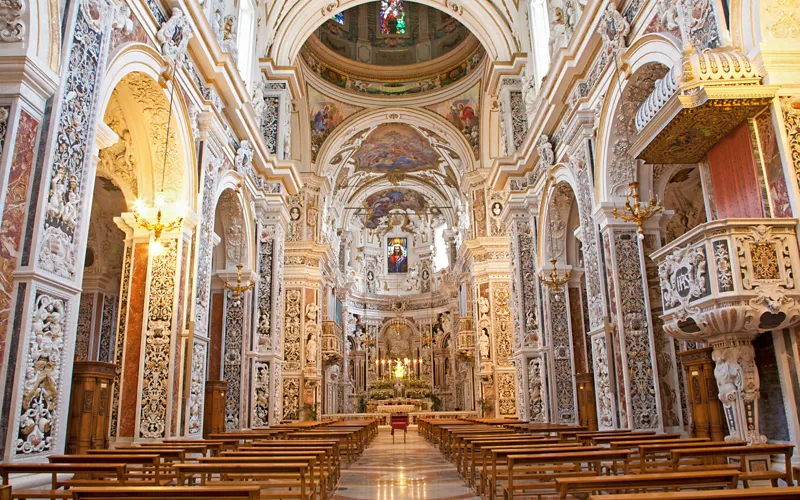
The Albergheria district, on the edge of the Ballarò market, offers an impressive triumph of Baroque. Not too far away, the Chiesa del Gesù, Casa Professa for the people of Palermo, is undoubtedly one of the greatest expressions of that Baroque art that has known its richest, most redundant and striking forms here. Stuccoes, frescoes, mixed marbles and intermingling, all made by the greatest exponents of art and sculpture of the seventeenth and eighteenth centuries, make it among the most magnificent churches in the whole of Sicily.
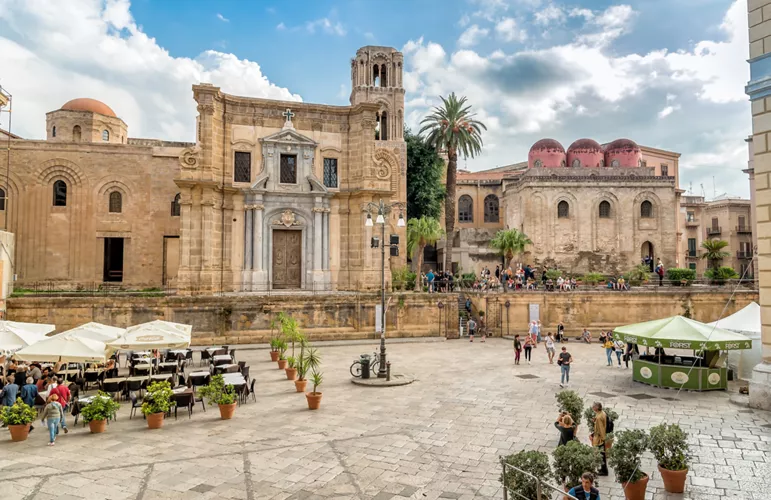
An unmissable stop, a pearl among the Byzantine churches in Italy, the Church of Santa Maria dell'Ammiraglio or Church of Martorana. Built before 1143 and currently listed as a UNESCO heritage site, it stands out for the harmonious union between the Norman Arab style and the subsequent Baroque additions. Interesting fact: although the church is under the authority of the Holy See, it follows the Orthodox liturgical calendar because it was granted to the nearby Piana degli Albanesi eparchy. The interior is richly decorated, including two mosaics at the entrance depicting Roger crowned by Jesus and the Admiral kneeling at the feet of the Virgin.
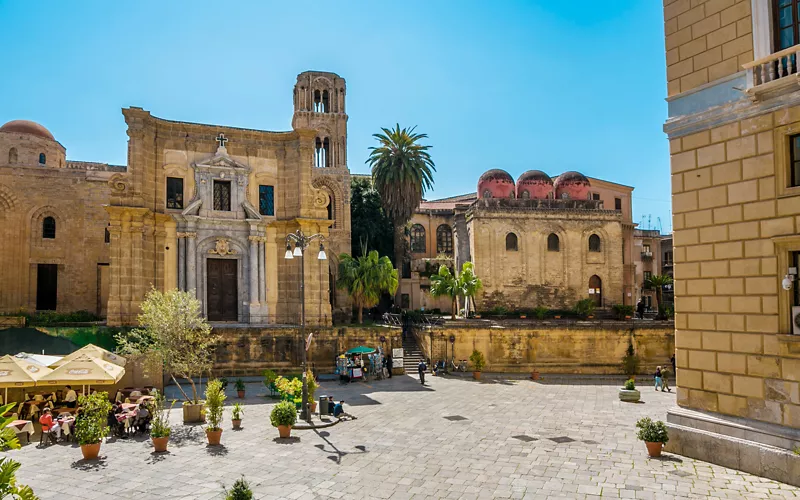
A welcoming salon in the historic centre, and certainly not the only one, Piazza Bellini will surprise you with its perimeter designed by architectures of different and distant styles and eras. . The Martorana church, the church of San Cataldo with its red domes, the Monastery of Santa Caterina and many more overlook here. And more wonder awaits you as you wander around the palazzo delle Aquile, beyond which lies another Palermo landmark: piazza Pretoria, with the monumental fountain known as "Fountain of Shame" (according to legend, its name derives from the nude statues in the piece, right in front of the monastery of the cloistered nuns of St Catherine, according to others, the "shame" is attributable to the amount spent on it). Don't hesitate, don't feel ashamed: you are in a very instagrammed corner of Palermo, so take advantage of it.
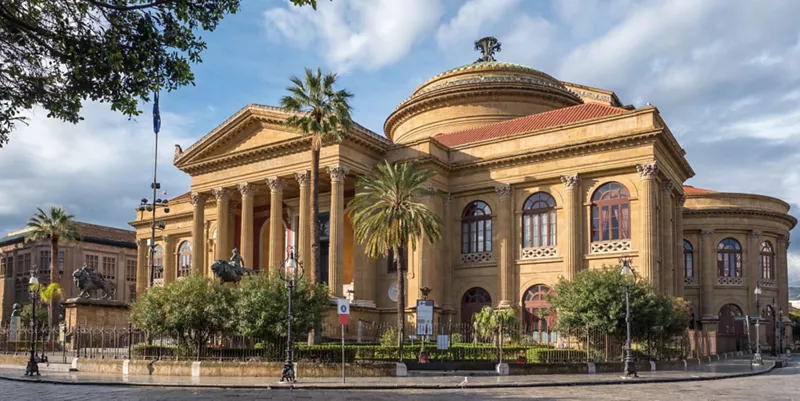
From a green perspective, Palermo, too, has equipped itself in the historic centre with a bicycle or scooter rental service: choose your preferred means of transport and head towards Palazzo Chiaramonte, known as the "Steri". Location of the rectorate of the city's university, it offers seven centuries of the art and history of SicilyIt is the first example of an architectural style that appeared on the island at the beginning of the 14th century, the so-called chiaramontano style. Elegant, stately, the building began as the home of a powerful Sicilian family, to become, in the 1600s, the location of the court and prison of the Inquisition. It has been enriched by splendid colonnades and beautiful mullioned windows. There are three outstanding and treasured elements in the palace: the 14th century wooden ceiling of the Great Hall with paintings on the theme of knighthood, the sorrowful graffiti left by prisoners on the prison walls, but above it all the renowned painting by Bagheria painter Renato Guttuso, "La Vucciria", really stands out. Another cult for social media: the largest Ficus in Europe, with its roots suspended between the branches and the ground, can be found in the Garibaldi garden, right in front of the Steri. You can end the day around here, perhaps in one of the many restaurants around the marina which is very close by. If you still have energy, treat yourself to an evening at Teatro Massimo, a temple of opera and dance, a worthy conclusion to bring down the curtain on an emotionally charged day.
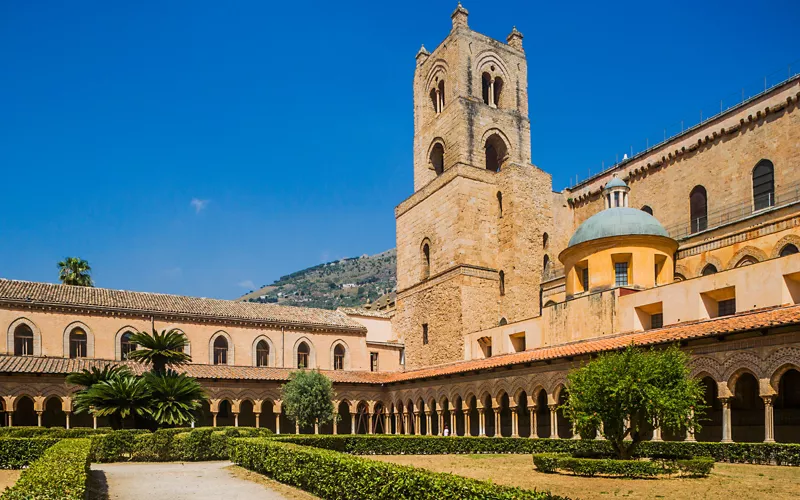
To recover from the long walks of day one, there are two options: climb up to Monreale and treat yourself to more discoveries and maybe a little meditation, or set course for Mondello in search of relaxation. Let's start with the second option: Palermo's favourite beach. Connected to the city by the vast Parco della Favorita, it offers stretches of open coastline and others with facilities and services, sharing crystal-clear waters and Art Nouveau villas near the beach. In the first proposal, the Monreale Cathedral (a UNESCO heritage site) offers architectural wonders and unique works of art such as the extensive, glittering mosaics. Walk through its museum and cloister and admire its richly decorated columns and capitals in silence and tranquillity. Whichever you choose, after lunch we'll meet again in the city to bring this intensive two days to a close.
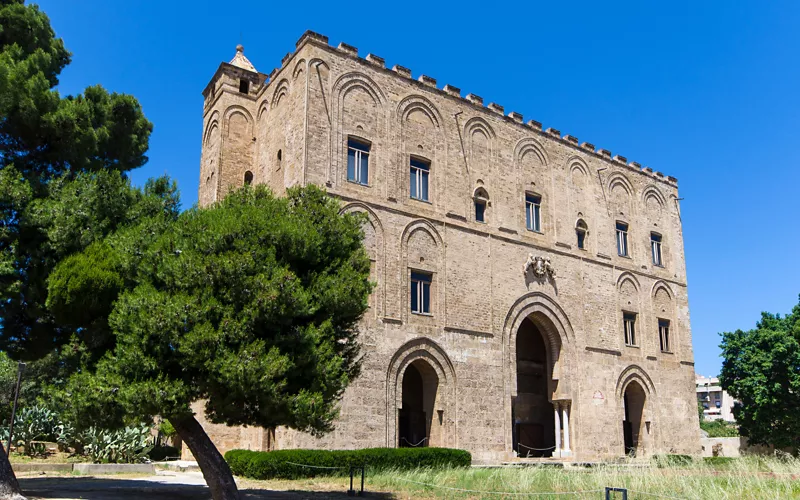
The afternoon of day two begins with a visit to the Castello della Zisa, dating back to 1165 and created as the summer residence of the royal family. Gardens, ponds and pergolas define the large park that surrounds it, while inside remains the splendour of Arab architecture of the rooms, with an impressive symmetrical and stereometric layout to guarantee the desired ventilation, coolness and humidity. Nearby there is also theformer industrial complex of the same name today home to exhibitions and festivals, a real community gathering place. Not far from here, but only if you have a strong stomach, the Catacombs of the Capuchins would also be worth a visit: in those days, the desire to preserve the body of a relative after death was so strong that those who could, paid friars handsomely to have their loved ones mummified. This over the years has given rise to an "uncovered" underground cemetery, where families had the opportunity not only to mourn the tomb of their deceased, but to see, talk to and... visit them as if still in the world of the living
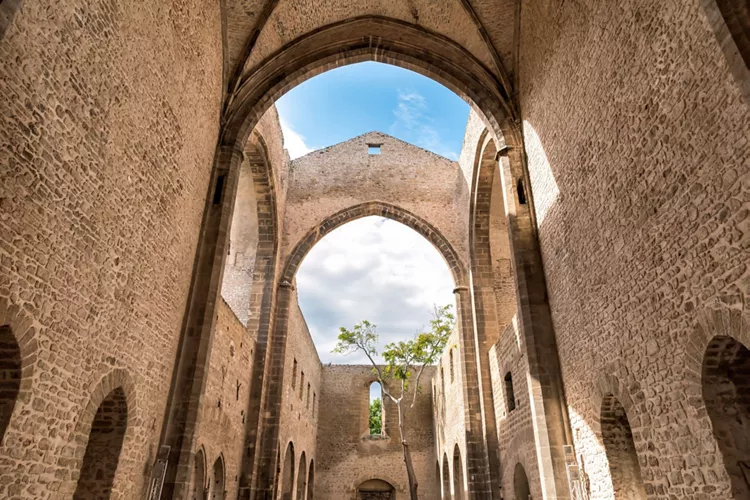
When time draws to a close, one last effort: a quick walk downtown through the locations seen yesterday to then reach the Kalsa, the district where the deconsecrated Church of Santa Maria dello Spasimo (where the sky has replaced the roof) is located, to enjoy the great emotions it offers. Still at this location, in Via dello Spasimo, enjoy a view of the murals (with a strong visual impact), that show how, through its decaying walls transformed into works of art, in Palermo, modern messages can be conveyed through century-old treasures.
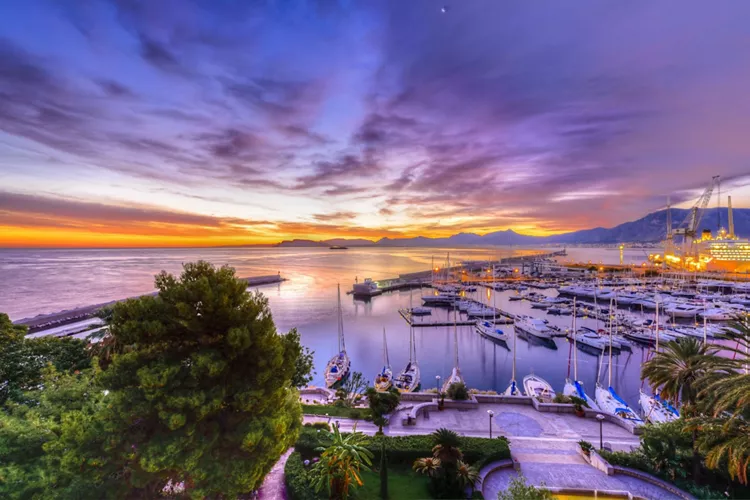
To say goodbye to Palermo you can then head back to the seaside promenade of the Borgo Sant'Erasmo Pier, which has gone through a redevelopment that did not betray its maritime essence. What is better than a toast at sunset, prelude to a “thousand and one nights” dinner, to be dedicated to your next trip to Palermo.

